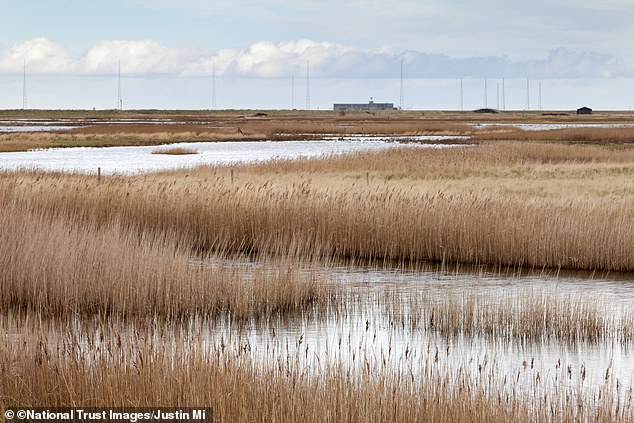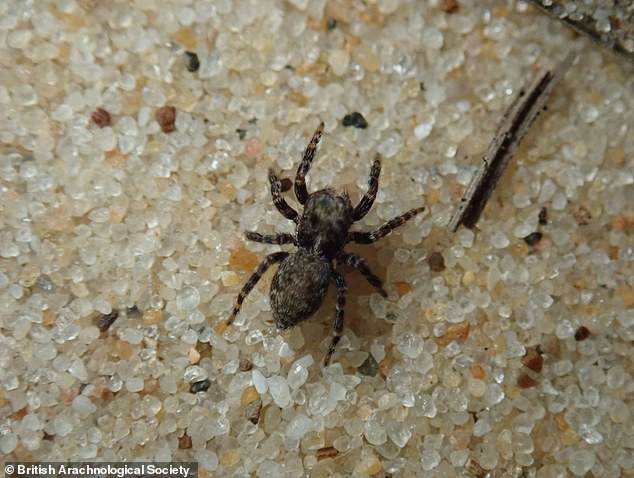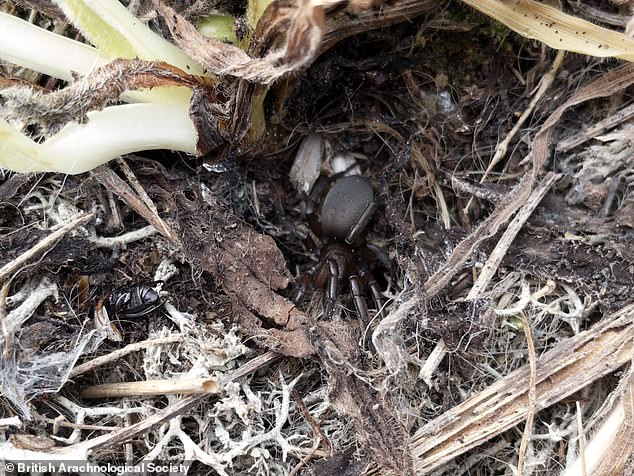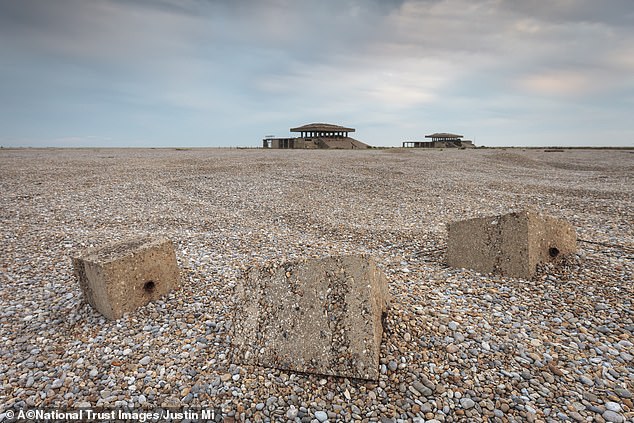Urgent warning for Brits as more than 50 different species of spiders are found in a nature reserve – including one that has NEVER been seen there before
If the idea of even seeing a spider makes you itch, make sure you stay away from Orford Ness.
According to the British Arachnological Society, the nature reserve and former 20th century military testing site is ‘teeming’ with spiders.
Surveys carried out by the association show that the Suffolk site is home to as many as 55 different species.
That includes twelve species thought to be rare or fearsome nationally, and one species of jumping spider never before seen on the Suffolk coast.
This jumping spider has previously only been found at six other locations in Britain, at locations hundreds of miles away on the south coast.
Fortunately, experts say none of the spiders pose a threat to humans.
Matt Wilson, National Trust Countryside Manager for the Suffolk and Essex coasts, said: ‘It is great to have identified a new spider species on Orford Ness and confirmed that the other rare species last recorded can still be found here in the early 2000s. .
“While the pictures we have may make them look bright, many of them are so small that it is unlikely they would have been found by non-experts and their equipment.”
Surveys carried out by the association show that the Suffolk site is home to as many as 55 different species. That includes 12 that are thought to be nationally rare or fearsome, and one species (pictured) of jumping spider never before seen on the Suffolk coast.

If the idea of even seeing a spider makes you itch, make sure you stay away from Orford Ness. According to the British Arachnological Society, the nature reserve and former 20th century military testing site is ‘teeming’ with spiders.

A Pseudeuophrys obsoleta spider was found hiding in empty whelk shells on the gravel – its favorite refuge
The British Arachnological Society carried out two surveys in Orford Ness this year.
The fragile coastal habitat – the largest pebble spit in Europe – consists of 2,000 hectares of reed marshes, mudflats, brackish lagoons and delicate gravel ridges and valleys.
‘The coastal marshes, together with the challenging gravel environment here, provide habitats for several types of ‘specialist’ species, and the presence of so many of these, as well as their high numbers, indicates a generally healthy habitat,’ Mr Wilson explained.
‘Although gravel habitats are susceptible to damage from leisure and commercial activities, we believe the remote nature of Orford Ness, where disturbance is limited, could help these spider species to be successful.’
One of the rarest species is the Gnaphosa lugubris.
Although only 69 specimens have been spotted in Britain since records began in 1900, the research suggests several thousand may live in Orford Ness.
Richard Gallon of the British Arachnological Society said: ‘Orford Ness is one of the most important locations in Britain for specialist coastal gravel spiders.
‘The rainy weather during our first survey in May was not ideal.

One of the rarest species is the Gnaphosa lugubris. Although only 69 have been spotted in Britain since records began in 1900, the research suggests several thousand may live in Orford Ness.

The fragile coastal habitat – the largest shingle spit in Europe – consists of 2,000 hectares of reed marshes, mudflats, brackish lagoons and delicate shingle ridges and valleys
‘Jumping spiders in particular are sun worshipers and tend to hide in bad weather, so we didn’t expect to find much.
‘Despite the weather, however, we soon found the nationally scarce Pseudeuophrys obsoleta hiding in empty Whelk shells on the gravel – its favorite refuge.’
The real highlight of the research, however, was the discovery of the Neon pictus – a jumping spider never before seen on the Suffolk coast.
“The highlight of the investigation came towards the end of that day when a small jumping spider was spotted clinging to the underside of a rock – this was Neon pictus,” Mr Gallon added.
‘We were delighted to find this species in Orford as it extends the known UK range of this nationally rare species into East Anglia.
‘Other spider records made during the survey are also important and confirm the continued presence of several rare and scarce species at the site.’
Overall, the researchers hope the discoveries will highlight the rich diversity of wildlife on Orford Ness.
Ben McCarthy, Head of Nature Conservation & Restoration Ecology at the National Trust, concluded: ‘It’s great to see the results of this research on one of our most special nature reserves.
‘Unlike most of our sites, Orford Ness has a relatively short history of biological recording, as it was largely closed to the public until the 1990s when the National Trust acquired it.
‘Since then, its importance has continued to grow, especially because of its fantastic invertebrate fauna, including these beautiful spiders.
‘It’s great to see that the careful management of the area’s habitats – from gravel to salt marshes, from grasslands to wetlands – is supporting so many of these much-maligned but important species.’
